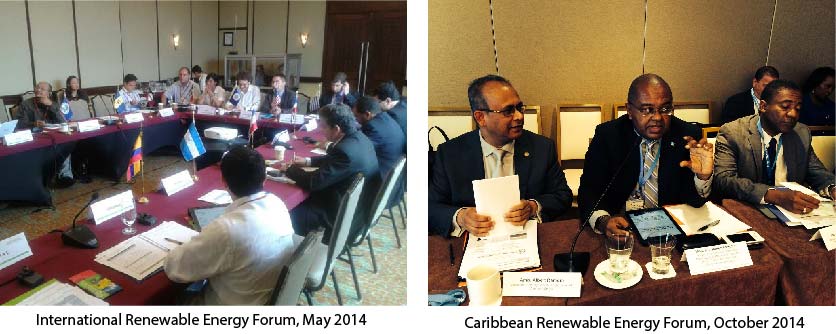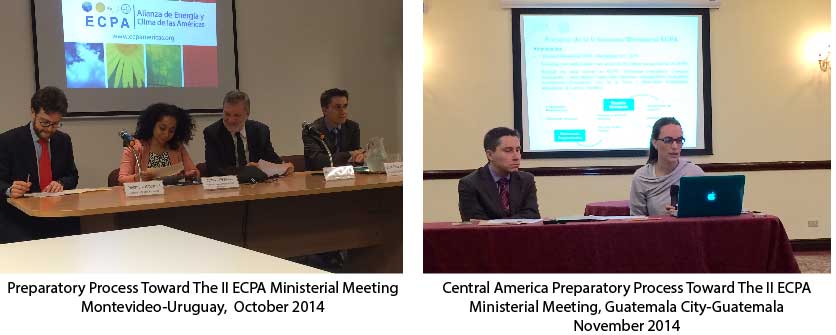
The most recent preparatory meeting took place November 5 in Guatemala, on the heels of the 2014 Mesoamerican Energy Investment Summit, and brought together representatives from Costa Rica, El Salvador, Honduras, and Mexico.

Energy is a major priority for the Central American countries and Mexico. In fact, the Mesoamerican Energy Investment Summit—held as part of the Connecting the Americas 2022 Initiative— highlighted the completion in October of the Central American Electricity Interconnection System. At the opening of the conference, Guatemalan President Otto Pérez Molina stressed that Guatemala is working with nearby countries to develop new dynamic policies focused on “clean, renewable, and environmentally friendly energy.” Mexican Energy Secretary Joaquín Coldwell, for his part, referred to energy as a “pivotal” opportunity for integration.
The Second ECPA Meeting of Ministers—the first was held in Washington, in 2010—will provide an opportunity for countries throughout the Americas to discuss their priorities related to energy and climate change, and structure a stronger partnership to address these issues. The date and place for the ministerial meeting have not yet been announced.
The preparatory process, coordinated by the ECPA Clearinghouse, began in May of this year, when Latin American authorities were meeting in Mexico for the International Renewable Energy Forum. Participants in that first meeting reviewed ECPA’s mission and vision and discussed the possibility of redefining priority areas and making the process more dynamic so that all countries could get more involved in their particular areas of interest. They also discussed the importance of greater continuity through ministerial-level meetings.

The second preparatory meeting took place October 6 in Miami, Florida, prior to the Caribbean Renewable Energy Forum, and brought together delegates from Barbados, the Dominican Republic, Jamaica, Mexico, Saint Kitts and Nevis, Saint Lucia, Suriname, the United States, and the United Kingdom as an observer. Representatives of the OAS, the Caribbean Development Bank, and the Inter-American Development Bank also attended. Participants discussed some of the critical energy and climate change issues they would like to see on the table in 2015. For the Caribbean countries, the high cost of electricity and the dependence on fossil fuel imports are among the main concerns. The Caribbean countries import more than 170 million barrels of petroleum products per year, with 30 million barrels earmarked just for electricity generation.
The preparatory process continued in Montevideo on October 28, and included representatives of Brazil, Chile, Colombia, Paraguay, Peru, and Uruguay. Participants discussed efforts the region has undertaken in each of the priority areas established under the Energy and Climate Partnership of the Americas. They stressed the importance of ensuring that the agenda reflects each country’s own sustainable-energy needs in the short, medium, and long term, so that actions are closely aligned with national priorities and context.

“Uruguay is an example in the Americas in terms of changing its energy matrix,” said Uruguay’s Minister of Industry, Energy, and Mining, Roberto Kreimerman, who spoke at the opening of the meeting. By using renewable sources such as wind, biomass, and solar, along with natural gas, Uruguay has been able to reduce its dependence on oil from 60 to 30 percent of the energy used over the last five years, and is on track to reach zero dependence by 2030, Kreimerman said.
The November 5 meeting in Guatemala was the fourth and last in the series of sub-regional preparatory meetings. Participants talked about some of the potential advantages of defining a sub-regional agenda, noting that a broad strategy could be stronger than a strictly national approach, allow for more effective interaction with multilateral agencies, and be in sync with regional integration. They also talked about the importance of including civil society and the private sector in this process.
 View Map
View Map